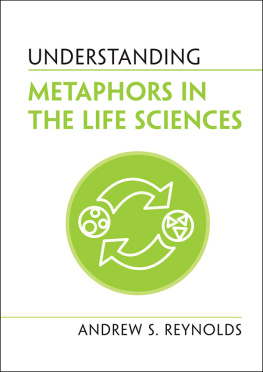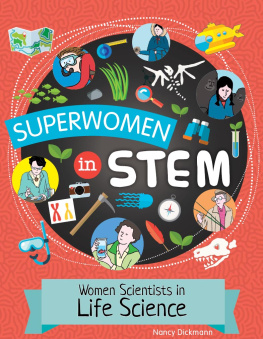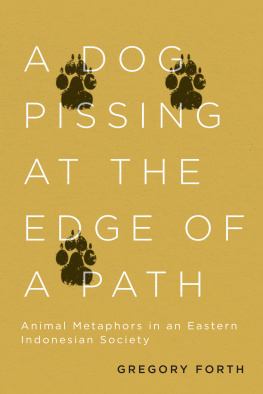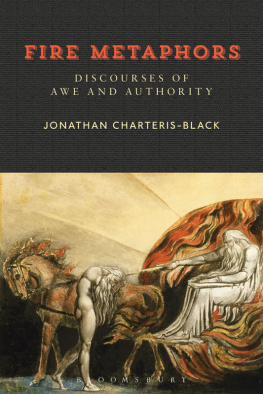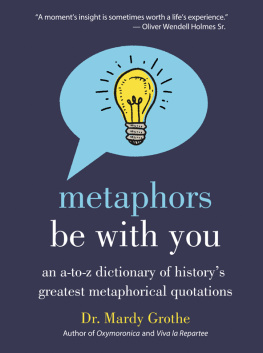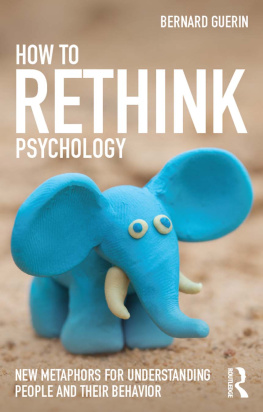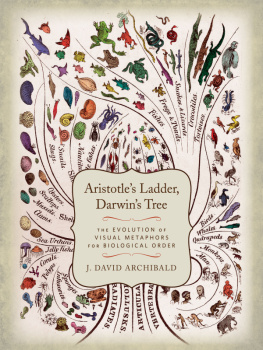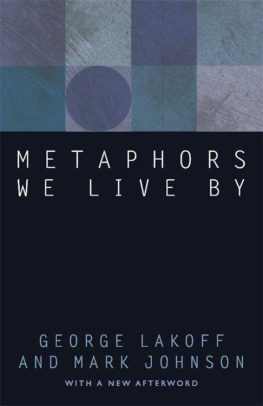
Contents
Understanding Metaphors in the Life Sciences
Covering a range of metaphors from a diverse field of sciences, from cell and molecular biology to evolution, ecology, and biomedicine, Understanding Metaphors in the Life Sciences explores the positive and negative implications of the widespread use of metaphors in the biological and life sciences.
From genetic codes, programs, and blueprints, to cell factories, survival of the fittest, the tree of life, selfish genes, and ecological niches, to genome editing with CRISPRs molecular scissors, metaphors are ubiquitous and vital components of the modern life sciences. But how exactly do metaphors help scientists to understand the objects they study? How can they mislead both scientists and laypeople alike? And what should we all understand about the implications of sciences reliance on metaphorical speech and thought for objective knowledge and adequate public policy informed by science?
This book will literally help you to better understand the metaphorical dimensions of science.
Andrew S. Reynolds is Professor of Philosophy at Cape Breton University, Canada. He is the author of The Third Lens: Metaphor and the Creation of Modern Cell Biology (University of Chicago Press, 2018) and Peirces Scientific Metaphysics: The Philosophy of Chance, Law and Evolution (Vanderbilt University Press, 2002). He has a PhD in the philosophy of science from the University of Western Ontario.
The Understanding Life series is for anyone wanting an engaging and concise way into a key biological topic. Offering a multidisciplinary perspective, these accessible guides address common misconceptions and misunderstandings in a thoughtful way to help stimulate debate and encourage a more in-depth understanding. Written by leading thinkers in each field, these books are for anyone wanting an expert overview that will enable clearer thinking on each topic.
Series Editor: Kostas Kampourakis http://kampourakis.com
Understanding Metaphors in the Life Sciences
Andrew S. Reynolds
Cape Breton University

University Printing House, Cambridge CB2 8BS, United Kingdom
One Liberty Plaza, 20th Floor, New York, NY 10006, USA
477 Williamstown Road, Port Melbourne, VIC 3207, Australia
314321, 3rd Floor, Plot 3, Splendor Forum, Jasola District Centre, New Delhi 110025, India
103 Penang Road, #0506/07, Visioncrest Commercial, Singapore 238467
Cambridge University Press is part of the University of Cambridge.
It furthers the Universitys mission by disseminating knowledge in the pursuit of education, learning, and research at the highest international levels of excellence.
www.cambridge.org
Information on this title: www.cambridge.org/9781108837286
DOI: 10.1017/9781108938778
Andrew S. Reynolds 2022
This publication is in copyright. Subject to statutory exception and to the provisions of relevant collective licensing agreements, no reproduction of any part may take place without the written permission of Cambridge University Press.
First published 2022
Printed in the United Kingdom by TJ Books Limited, Padstow Cornwall
A catalogue record for this publication is available from the British Library.
Names: Reynolds, Andrew S., 1966 author
Title: Understanding metaphors in the life sciences / Andrew S. Reynolds.
Description: Cambridge, United Kingdom ; New York, NY : Cambridge University Press, 2022. | Series: Understanding life | Includes bibliographical references and index.
Identifiers: LCCN 2021027054 (print) | LCCN 2021027055 (ebook) | ISBN 9781108837286 (hardback) | ISBN 9781108940498 (paperback) | ISBN 9781108938778 (ebook)
Subjects: LCSH: Communication in biology. | Metaphor. | Science Language. | Life sciences Philosophy. | BISAC: SCIENCE / Life Sciences / Genetics & Genomics
Classification: LCC QH303 .R48 2022 (print) | LCC QH303 (ebook) | DDC 570dc23
LC record available at https://lccn.loc.gov/2021027054
LC ebook record available at https://lccn.loc.gov/2021027055
ISBN 978-1-108-83728-6 Hardback
ISBN 978-1-108-94049-8 Paperback
Cambridge University Press has no responsibility for the persistence or accuracy of URLs for external or third-party internet websites referred to in this publication and does not guarantee that any content on such websites is, or will remain, accurate or appropriate.
What a timely book this is! It is precisely because biology has made such striking advances in recent years that its stock of metaphors is due for a clinical check-up. Reynolds offers a reliable and perceptive diagnosis of the framing narratives of the life sciences, sympathetically examining their strengths and weaknesses. This book should be an essential accompaniment to any study course in the biological sciences.
Philip Ball, science writer and author of How to Grow a Human
In this beautifully written, highly accessible, and captivating work, Reynolds reveals the incredible extent to which scientific methods and descriptions in biology, the life sciences, and medicine are infused with metaphors. Interweaving the rich history and philosophy of the uses of these metaphors over time, their many implications for scientific reasoning, understanding, and the ethical and political dimensions of science itself are perceptively explored, with wonderful clarity and across an encyclopedic range of examples. Metaphors afford telling insight, opening doors to further inquiry and closing others. Is your genome software? Are enzymes molecular machines? Does nature select some traits over others, thereby constructing the tree of life? The fascinating world of metaphors in science comes to life on every page.
Anjan Chakravartty, University of Miami, USA
I read Lakoff and Johnsons book Metaphors We Live By in the 1980s, and it was eye opening. Andrew Reynolds book, which should be called Metaphors Science Lives By , is equally eye opening. Metaphors shape the way we live in the world. In science, they shape the way we understand the world. This can have huge implications for our lives, for better or for worse. How does this process of understanding work, especially in the life sciences? This book deals with the essential role of metaphors in this process. Written in an admirably clear style, Reynolds makes us aware of the power of metaphor, but also its dangers and pitfalls. It is an essential read for everybody interested in understanding how science and science communication work with and through metaphors. Importantly, it also dispels some common misunderstandings about the role of metaphors in science.
Brigitte Nerlich, University of Nottingham, UK
Understanding Metaphors in the Life Sciences takes us from genes to cells, and up to the vast evolutionary tree of life, showing how science depends overwhelmingly on metaphor for understanding, for advance, for communication. A very important book.
Next page
